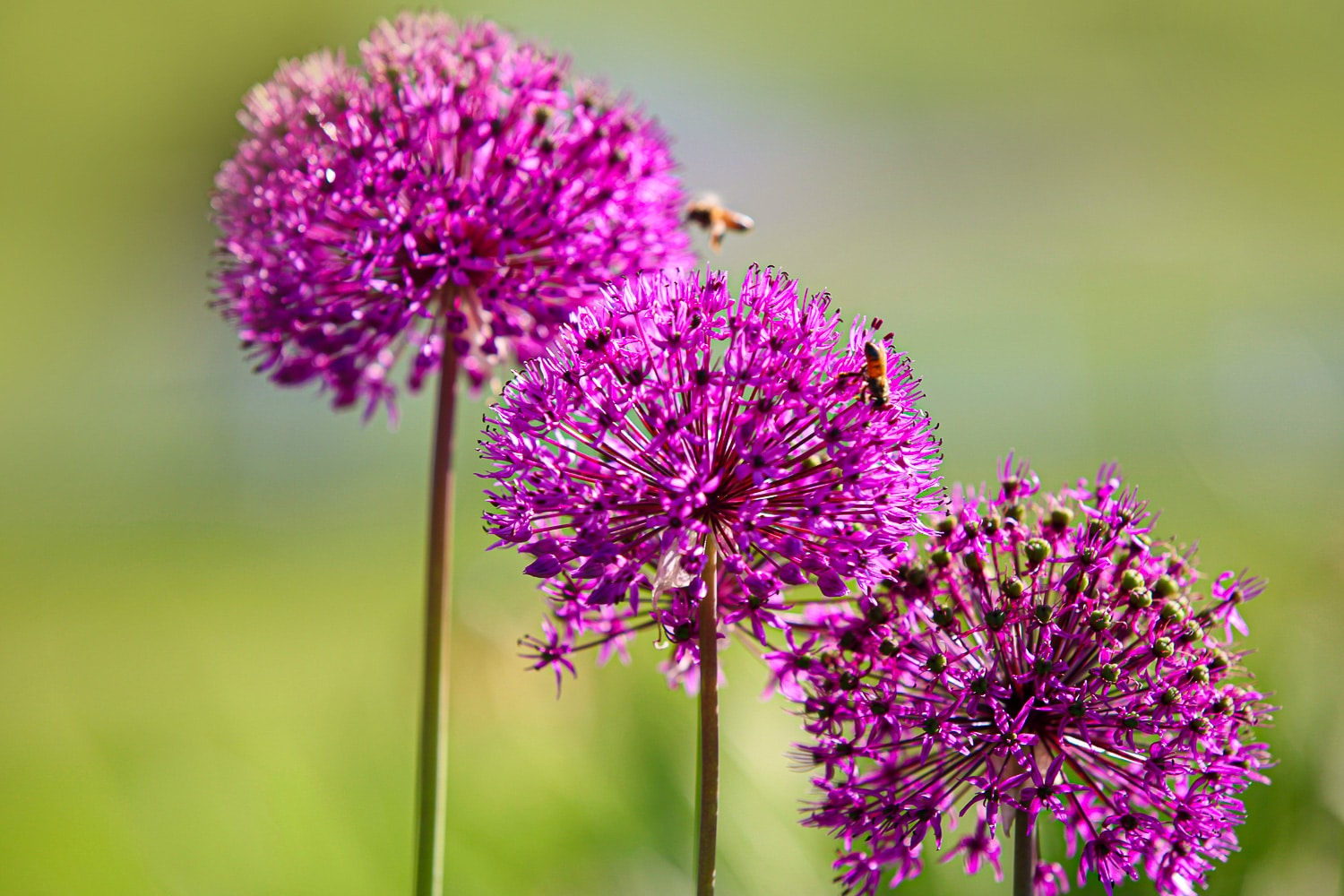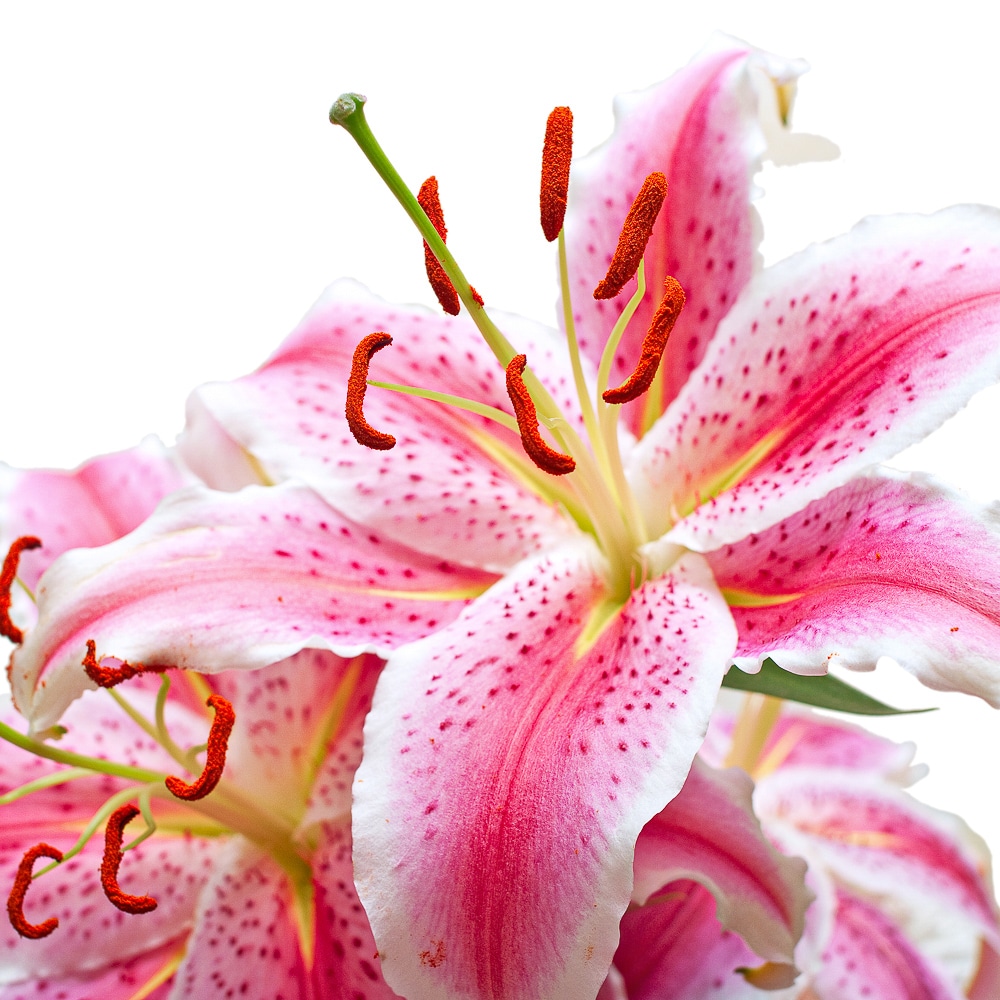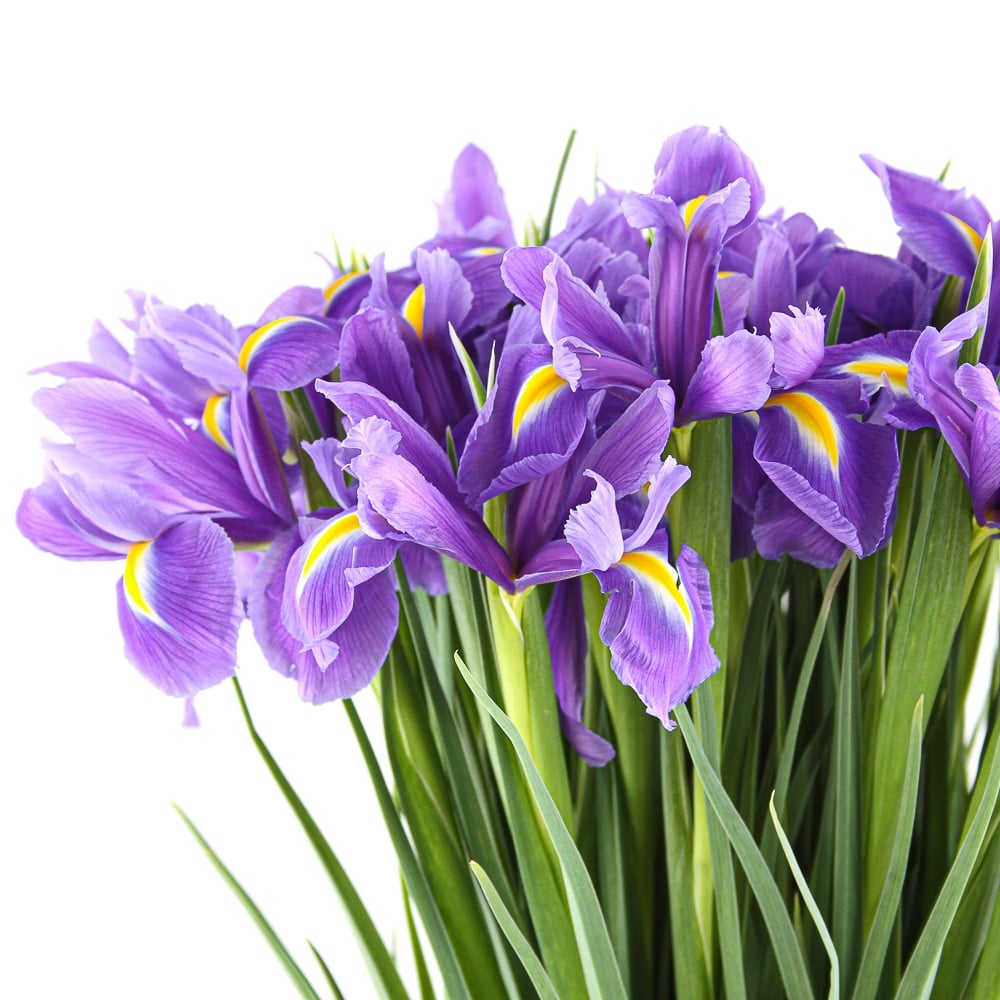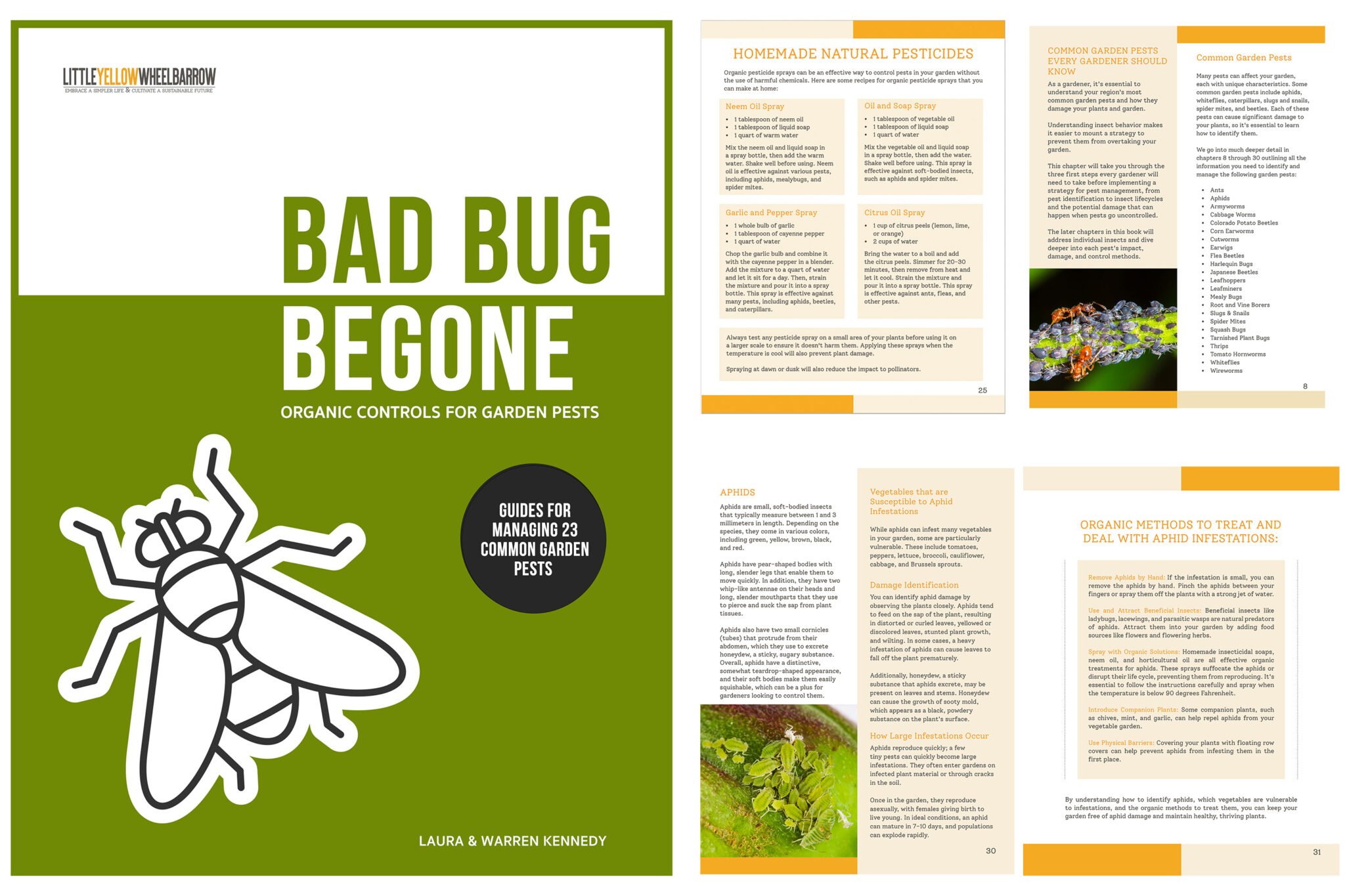Fall Bulbs to Plant for Explosive Color in Spring and Summer!
Looking to add a burst of vibrant colors to your garden? Fall-planted flower bulbs are the answer! Planting these bulbs in autumn sets the stage for a stunning spring and early summer show display that will leave you in awe. The best part? They’re incredibly easy to grow and require minimal maintenance, making them perfect for both seasoned gardeners and beginners alike.
Planting fall flower bulbs gives them ample time to establish their roots before winter. This ensures they have a solid foundation to produce beautiful blooms in the spring garden. With an array of options available, you can choose other fall bulbs that perfectly suit your preferences and complement the overall aesthetic of your garden.

After a long winter, seeing delicate tulips and cheerful daffodils emerging from the ground is beautiful. These fall-planted flower bulbs not only provide stunning cut flowers but also enhance the beauty of your garden.
If you want to turn your garden into a beautiful floral paradise come spring, look no further than fall flower bulbs. Start now for a stunning garden next spring!
Best Bulbs for Fall Planting: Spring Crops and Color
Looking to add a burst of needed color to your garden when spring rolls around? Planting bulbs in the fall is an excellent way to ensure vibrant blooms that perk up your yard and keep gardeners happy early in the season. Several options will bring life and beauty to your outdoor space, from tulips and daffodils to hyacinths. Let’s explore some of the best bulbs for fall planting and how they can transform your garden into a stunning display of spring colors.
Tulips, Daffodils, and Grape Hyacinths: A Symphony of Colors
Tulips, daffodils, and hyacinths are undoubtedly among the most popular choices. These classic bulbs offer various colors, shapes, and sizes that suit any taste or garden design. Whether you prefer bold and vibrant hues or soft pastels, these bulbs have you covered.
Tulips come in shades like reds, yellows, pinks, purples, and whites—creating a kaleidoscope of colors to make your garden stand out. Daffodils bring their sunny disposition with bright yellow petals surrounding their iconic orange trumpet-shaped center. Hyacinths offer stunning flowers and an intoxicating fragrance that fills the air with their sweet scent.
Planting these perennials in the fall allows them to establish robust root systems during winter dormancy. As the temperatures rise in early springtime, they burst forth with captivating blooms that herald the arrival of this much-awaited season.
Learn More: Check out our full guide to growing daffodils, and our guide to daffodil colors.
Early Bursts of Color: Crocuses and Snowdrops
Crocuses and snowdrops save the day if you’re impatient for color after a long winter! These hardy little bulbs emerge early in late winter or early spring, providing a delightful splash of color when everything else is still dormant.
Crocuses come in shades of purple, pink, yellow, snow white, and striped varieties. Their delicate petals reveal vibrant centers that attract bees and other pollinators. On the other hand, Snowdrops are known for their pure white flowers with drooping petals resembling tiny bells. These charming bulbs add an enchanting touch to any garden and signify the hope of warmer days.
Learn More: Check out our complete guide to growing crocus!


Unique Spherical Flowers: Alliums
Alliums are excellent for those seeking something unique to adorn their garden. These bulbs produce spherical flower heads that add a touch of happy whimsy to any landscape. With their tall stalks and large blooms composed of numerous small flowers, alliums make a statement wherever they’re planted in the fall.
Alliums come in various sizes and colors—from soft purples to vibrant pinks—and can reach heights anywhere from 12 inches to over 4 feet! Their architectural presence adds vertical interest to your garden beds or borders, attracting butterflies and bees with their nectar-rich flowers.
Learn More: For more info check out our guide to growing popular allium varieties!

Majestic Flowers for Fall Planting: Lillies and Irises
If you’re a gardening enthusiast looking to add a touch of grandeur to your autumn garden, consider planting lilies and irises. These beautiful flowers possess a regal charm that can transform any garden into a realm of natural beauty. Planting lilies and irises in the fall promises a breathtaking display of colors and textures in summer and, in some cases, into fall again.
Lilies, known for their graceful, trumpet-shaped blooms, come in a wide range of dazzling colors, from pure whites to fiery oranges. They are resilient in various climates and can enhance the beauty of formal garden designs and relaxed cottage-style landscapes.
Irises exude sophistication with their delicate, ruffled petals and intricate patterns. Their color palette includes calming blues, vibrant yellows, and deep purples, making them versatile for adding depth and visual interest to your garden.


How to Properly Plant Fall Flower Bulbs
Here are the simple steps to ensure your fall flower bulbs have the best chance at a beautiful spring flower show:
Choose the Perfect Spot for Your Bulbs
Finding the right location is crucial when planting fall flower bulbs. These plants thrive in well-draining soil and require sufficient sunlight for optimal growth. Look for an area in your garden that receives at least six hours of direct sunlight daily. Avoid waterlogged spots, as excessive moisture can cause the bulbs to rot.
Digging Holes: The Right Depth Matters
Once you’ve identified the ideal spot, it’s time to prepare the holes for your bulbs. The depth at which you plant them depends on their size, so check the recommended planting depth for each variety. A general rule of thumb is to dig a hole two to three inches deep, three times deeper than the bulb’s height.
Related: Fall is a great time to plant some bulbs, but most of your garden needs to be cleaned up and put away for winter. Check out our guide to winterizing your garden for more information and tips.

Placing Bulbs with Precision
After digging the holes, it’s time to place your bulbs inside. Ensure that you position them correctly with their pointed ends facing up. This orientation allows the roots to grow downward while ensuring the shoots emerge towards the surface.
Once all your bulbs are nestled snugly in their respective holes, it’s time to backfill them with soil. Gently fill each hole, making sure not to compact or disturb the bulbs too much. Use your hands or a small gardening tool to gently firm the soil around them.

Watering: Nourishing Your Newly Planted Bulbs
Watering is critical after planting fall flower bulbs as it helps settle the soil and provides essential moisture for root development. Give your newly planted fall bulbs a thorough watering immediately after planting and continue providing regular irrigation throughout their growing season.
Remember that overwatering plant bulbs can be detrimental; aim for moist but not soggy soil conditions. Monitor rainfall levels and adjust watering accordingly, ensuring your bulbs receive adequate hydration without becoming saturated.
Effortless Post-Planting Bulb Care
Bulbs are generally easy to take care of if they are planted at the right time, depth, and place, but two things can help your bulbs more than anything else: mulching and keeping an eye on moisture levels.
Don’t Forget to Add Mulch
Once you have carefully planted your bulbs in the fall, it’s essential to take steps to protect them from extreme temperatures. One effective way to do this is by applying a layer of mulch over the newly planted bulbs. Mulch acts as insulation, helping regulate soil temperature and prevent rapid fluctuations that can harm the bulbs.
Mulch is a protective barrier between the fall bulbs and the external environment. It helps retain moisture in the soil, which is essential for bulb growth and development. Mulch also helps prevent weed growth, which can compete with bulbs for nutrients and water. When heavy weeds are present, it can cause your bulbs to struggle, and poor blooms may impact your flowers.
Common Problems – Disease & Pests
Although fall-planted bulbs are generally easy to grow, they can have a few challenges, primarily with pests and diseases.
Bulb Rot: Excessive Moisture and Poorly Drained Soil
One of the common problems that bulb plants may face is bulb rot, which can be caused by excessive moisture or poorly drained soil.
When bulbs are planted in moist soil without proper drainage, they become susceptible to rotting. This can lead to the decay of the bulb and hinder its ability to grow into a healthy plant.
To avoid bulb rot, it is essential to ensure good drainage in the planting area. If your garden has clay soils that retains water, consider amending the soil with compost or organic matter to improve its drainage capabilities.
You can plant bulbs in raised beds or containers with well-draining soil to prevent excess moisture accumulation around the bulbs.
Squirrels and Rodents: Unwanted Visitors
Squirrels and rodents can cause frustration for gardeners by digging up bulbs that have been carefully planted in the fall. These critters are attracted to the scent of bulbs and view them as a tasty treat. You can take several measures to protect your bulbs from these furry intruders.
- Physical barriers: Use wire mesh or hardware cloth over the planting area to prevent squirrels and rodents from accessing the bulbs.
- Repellents: Apply natural repellents such as cayenne pepper or predator urine around your planting area to deter these animals.
- Planting strategies: Consider interplanting bulbs with species that squirrels find less appealing, such as daffodils or alliums.
By implementing these protective measures, you can minimize the chances of squirrels and rodents disrupting your beautiful bulb display.
Learn More: See our complete guide on how to keep squirrels out of your garden beds! We go into greater detail and share what’s worked for us in our gardens over the years.

Aphids, Slugs, and Snails: Troublesome Pests for Fall Bulbs
Aphids, slugs, and snails are common pests that threaten bulb foliage. These tiny creatures feed on plant sap, causing damage to the leaves and stems of bulb plants.
Fortunately, there are ways to combat these pests and protect your bulbs.
- Natural predators: Encourage beneficial insects like ladybugs or lacewings in your garden. These insects feed on aphids and can help control their population.
- Handpicking: If you spot slugs or snails on your bulbs, manually remove them from the plants and relocate them away from your garden.
- Organic repellents: Apply organic slug and snail repellents around the base of your bulb plants to deter these pests.
Taking proactive steps to address aphids, slugs, and snails will help keep your bulbs healthy and thriving.
BAD BUG BEGONE!
$5.99
Are harmful insects running your gardening season?
Our guide to organic pest control methods offers practical solutions for dealing with common garden pests without using harmful chemicals. With step-by-step instructions and easy-to-follow tips, you’ll learn how to create a pest-resistant garden that is safe for your family and the environment. A great on-hand resource for any gardener!

A must-have resource for Gardeners
Our digital e-book is for you if you’re a home gardener passionate about growing healthy, pesticide-free plants! Over 100 pages of organic pest management information are perfect for beginner gardeners and pros alike.
Botrytis Blight and Gray Mold: Fungal Troubles
Botrytis blight and gray mold are fungal diseases that can affect bulb plants, causing significant damage if left unchecked. These diseases thrive in moist environments with poor air circulation, making bulbs susceptible to high humidity or excessive rainfall.
To prevent botrytis blight and gray mold:
- Good airflow: Ensure proper spacing between bulbs for adequate airflow around the foliage when planting.
- Remove infected material: Promptly remove any decaying or infected plant material from the garden bed to prevent the spread of disease.
- Avoid overhead watering: Water at the base of the plants rather than overhead to minimize moisture on foliage.
Conclusion – Embrace The Beauty
Congratulations! You are now armed with all the knowledge you need to create a stunning fall garden bursting with vibrant colors.
You can ensure a breathtaking display that will leave your neighbors in awe by planting the best bulbs for fall, such as tulips, daffodils, and hyacinths. Not only will these bulbs bring joy to your eyes, but they will also infuse your surroundings with a delightful fragrance. So why wait? Get out there and start planting!
And I want to leave you with just one tip – buy your bulbs from reputable sources that provide great customer service and years of experience, like Burpee, Eden Brothers, and Dutch Grown. Dutch Grown has a 4.5-star Trust Pilot score with almost 10,000 reviews, so you are in good hands. They also have a stunning assortment of tulips!

Looking For More Flower Gardening Inspiration?
We have loads of content for growing flowers; from bulbs, corms, rhizomes, and tubers – we have you covered!
- How to Plant Calla Lily Bulbs
- How Deep To Plant Iris Bulbs (Bulbous Irises)
- How Late Can you Plant Allium Bulbs?
- How to Plant Ranunculus Bulbs – Planting, Growing, and Storing
- Bulbs for Spring Planting and Beautiful Summer Blooms
- Can You Plant Peonies in the Spring?
- How to Plant Gladiolus Bulbs For Beautiful Summer Blooms
- Growing and Caring for Tulips
- How to Grow and Care for Amaryllis Bulbs
- Proper Storage of Amaryllis Bulbs

FAQ
Yes! Planting bulbs in pots is an excellent option if you have limited space or want more control over their growing conditions. Choose a pot with good drainage and fill it with well-draining soil. Place the bulbs at the recommended depth for each type and water them regularly. Just make sure to protect potted bulbs from extreme cold temperatures during winter.
The ideal time to plant fall flower bulbs is typically in late summer or early fall when the soil has cooled down but is still workable. This allows enough time for roots to establish before winter sets in. However, specific planting times may vary depending on your location and climate zone, so it’s always best to check local gardening resources or consult experts for precise recommendations.
While some gardeners choose to fertilize their fall-planted bulbs at planting time, most varieties do not require immediate fertilization. The nutrients stored within the bulb are usually sufficient to support initial growth. However, you can apply a slow-release fertilizer when new growth emerges in spring flowering bulbs to boost the growing season.
To prevent bulbs from rotting in wet soil, it’s crucial to ensure proper drainage. Choose well-draining soil or amend heavy clay soil with organic matter like compost. Avoid overwatering and consider planting bulbs in raised beds or containers if your garden tends to have consistently soggy conditions.
Absolutely! Fall bulbs can be a fantastic addition to mixed borders and perennial beds. Their vibrant blooms will add pops of color among other plants, creating a visually appealing and dynamic garden. Consider their height, bloom time, and sunlight requirements when selecting companion plants to ensure harmonious coexistence.







